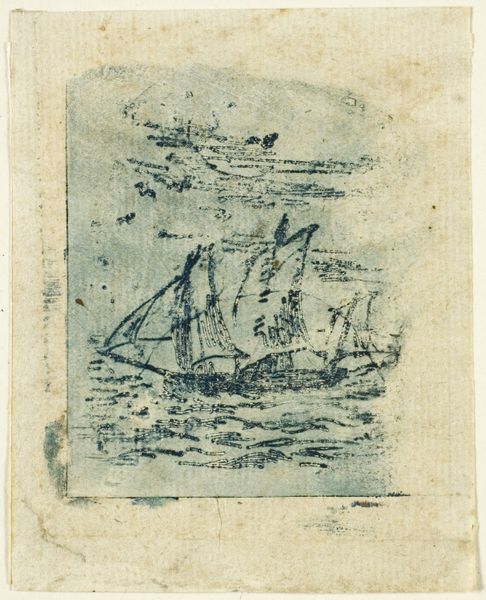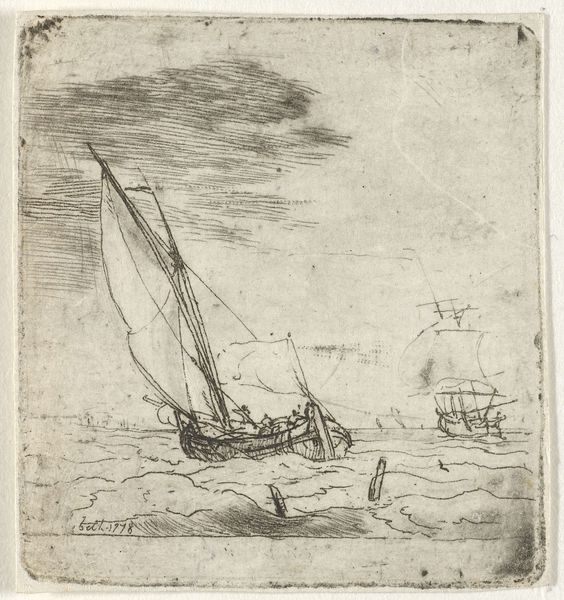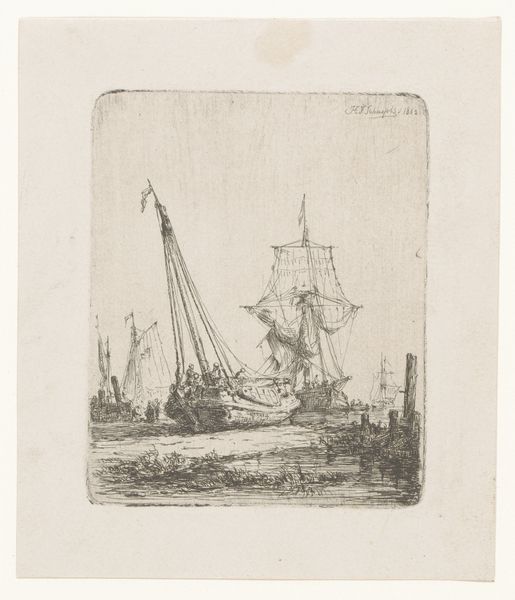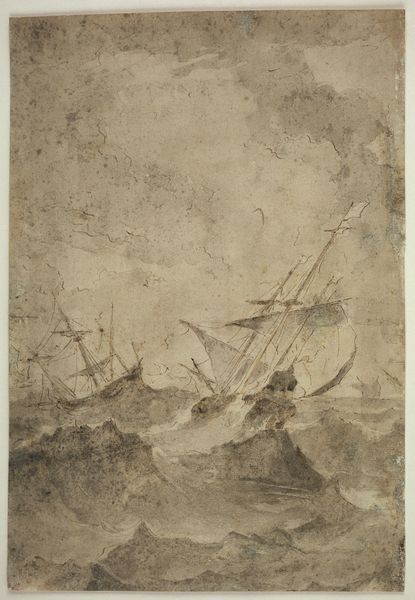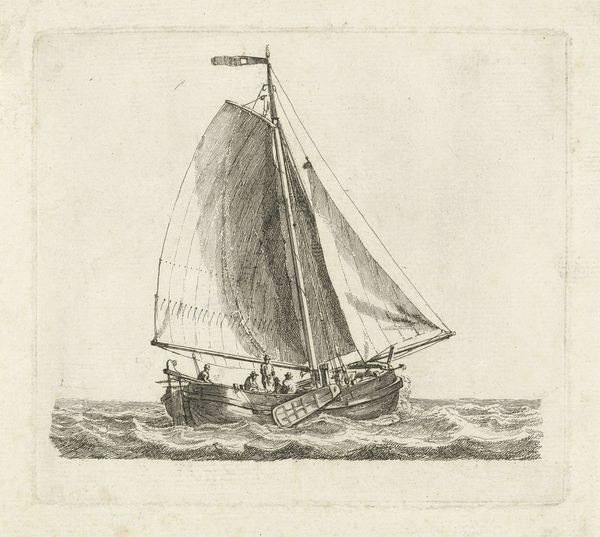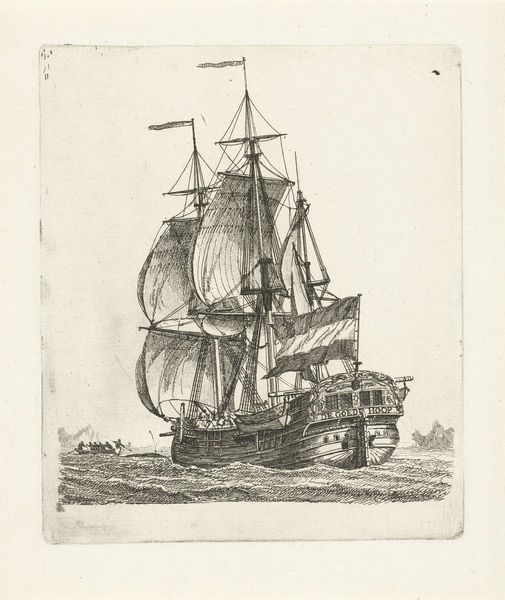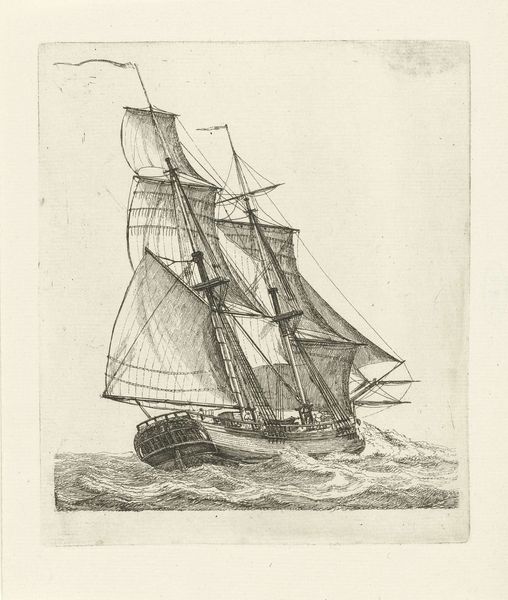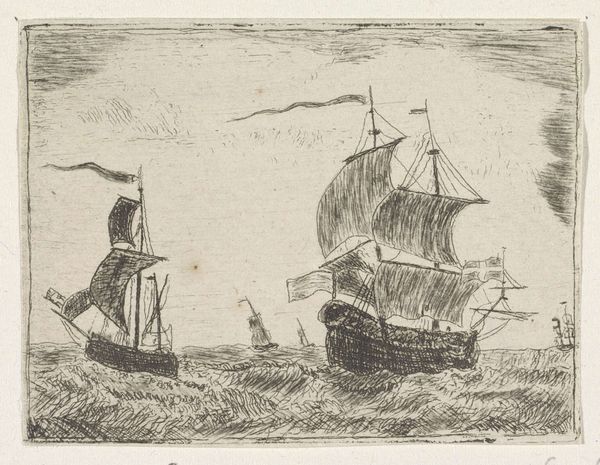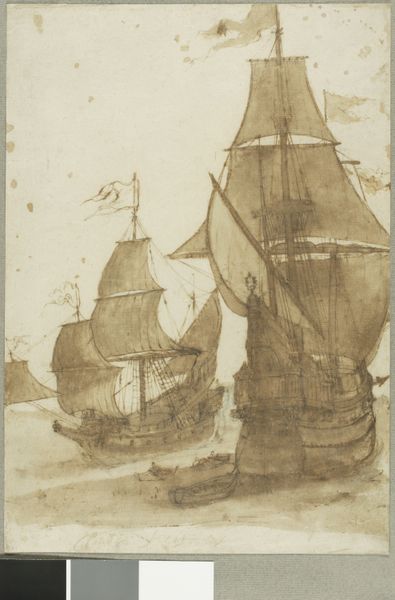
drawing, print, etching, paper, ink
#
drawing
# print
#
etching
#
landscape
#
paper
#
ink
#
coloured pencil
Dimensions: 64 × 52 mm (image); 86 × 68 mm (sheet)
Copyright: Public Domain
Curator: Before us is Jean-François Millet's etching, "A Vessel Under Sail," created around 1847. It's a study in ink on paper, currently residing at The Art Institute of Chicago. Editor: My immediate impression is one of contained restlessness, a sketch vibrating with captured, frenetic energy. The tonal range, however muted, pulls the eye directly to the scene. Curator: Note how Millet employs hatching and cross-hatching to establish depth and volume, lending shape to both the turbulent waters and the sails catching the wind. The contrast between light and shadow is particularly striking in rendering the hull. It’s an object lesson in maximizing expression through minimal means. Editor: But expression for what purpose, exactly? The mid-19th century was a period of vast transformation fueled by imperial projects, and this ship feels less like a romantic subject than an agent in global flows of people, capital, and goods extracted and exploited by colonial regimes. Do you feel the artist shares this perspective, or perhaps the patron commissioning the image? Curator: Whether Millet consciously intended a critique or celebration of these "flows" is less evident to me than the way he constructs an aesthetic problem and works towards its solution within a limited frame. He has created a pleasing tension between the stability of the central form—the ship—and the instability suggested by the sketched and scribbled elements of wind, water and weather. Editor: The visual structure of the work cannot be divorced from its historical circumstances. Considering this piece alongside contemporaneous accounts of maritime activity in France reveals the socio-economic stratification implicit in Millet's rendering. It cannot be considered divorced from French involvement in things like the trans-Atlantic slave trade. Curator: Your argument compels attention, yet it also underscores the beauty inherent in the print's delicate linework, how those marks alone create this compelling interplay of stability and dynamism. I keep thinking of the precision with which each line helps define the ship's interaction with its environment. Editor: Precisely; its relationship with a human-imposed structure of ownership and exchange. Hopefully considering those forces, not just its immediate context or composition, deepens the viewers engagement with the work. Curator: Indeed. Such dual perspectives greatly enhance our perception. Editor: An insightful exchange; art benefits from this discourse of approaches.
Comments
No comments
Be the first to comment and join the conversation on the ultimate creative platform.
